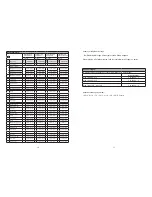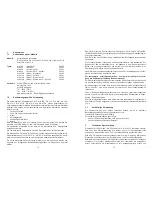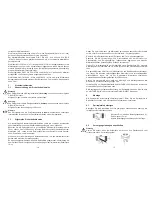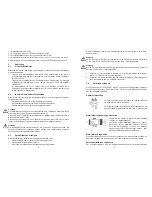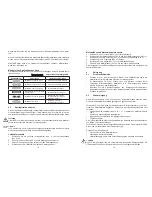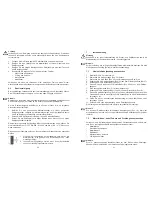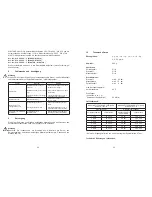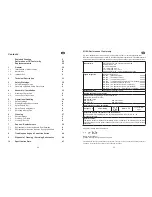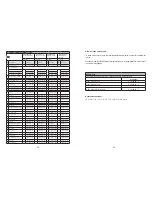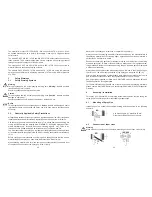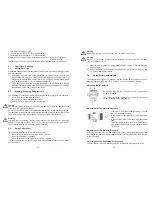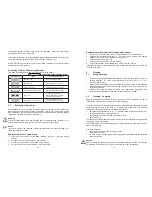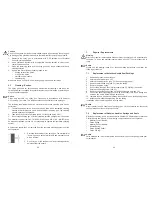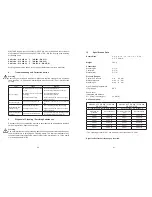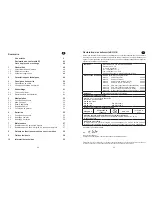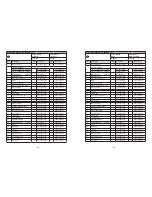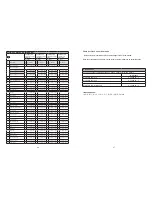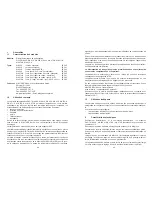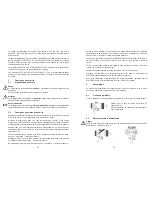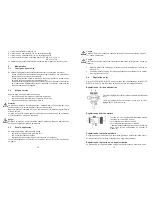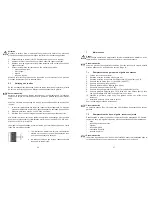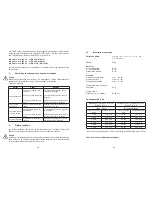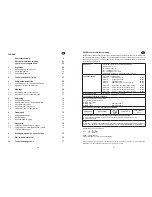
39
38
Caution
Do not use any hard, pointed or sharp-edged objects when cleaning the spray gun.
Any damage of the precision-made parts are likely to affect your spraying results.
1. Dismantle the spray gun in accordance with
5.5 Replacement of Material
Control Nozzle and Needle.
2. Use a soft brush together with a compatible cleaning sulotion to clean the air
control head and nozzle.
3. Clean the remaining parts and the spray gun body with a suitable cloth and
cleaning solution.
4. Apply a thin film of the appropriate grease to the:
•
sealing collar of the piston
•
O-ring of the piston
•
material control needle
•
needle spring
Make sure to use a non-acidic, non-resinogenic grease and a soft brush.
6.3
Cleaning - Routine
The spray gun need not necessarily be dismantled for cleaning if and when the
spraying medium is changed in regular intervals or upon termination of work (depen-
ding on the material used).
Notice
Clean and lubricate the spray gun frequently in accordance with Chapter
6.2 Cleaning - Complete
. This will ensure functional reliability of the spray gun.
The following requirements must be met before the routine cleaning work can be
performed:
1. The material tank must be clean and then be filled with a compatible cleaning
solution. Material pressure has to be available at the spray gun. The cleaning
solution should not be sprayed.
2. Take the spray gun into operation (see
5.2 Starting the Spray Gun
).
3. Do not stop the spray gun until clear cleaning solution emerges from the nozzle.
The material supply of the PILOT WA 400 - WA 430 and WA 470-K - WA 473-K can
be manually released so that it is not necessary to operate the complete spraying
system.
All pressures should then be removed from the complete spraying system until the
next operation.
7
Repairs / Replacements
Warning
Prior to any repairs / replacements: Make sure that the spray gun is in unpressurized
condition, i.e. all air and material inputs must be shut off - if not, imminent risk of
injury.
Notice
Please use the drawing (page 2) of these operating instructions to perform the
following procedures.
7.1
Replacement of defective Needle Seal Packings
1. Remove all pressures from the gun.
2. Unscrew the drawbar (pos. 33).
3. Unscrew the adjuster cap (pos. 32) from the casing (pos. 6).
4. Remove the threaded ring (pos. 31) from the casing.
5. Remove the piston spring.
6. Pull out the piston plus the material needle (pos. 25-29) from the casing.
7. Unscrew the packing screw (pos. 21).
8. Remove the packing spring (pos. 20) and the pressure ring (pos. 19).
9. Pull out the needle packing (pos. 18) with an auxilliary tool. Use a strong wire
on which one end is bent making a small hook.
10. Lubricate the new needle seal packing with non-acidic, non-resinogenic grease.
11. Install the new needle seal packing into the casing.
Installation of the remaining parts in reverse order.
Notice
Never reinstall a used needle seal packing (pos. 18) as otherwise the functional
sealing reliability of the spray gun will suffer.
7.2
Replacement of Nozzles, Needles, Springs and Seals
Dismantle the spray gun in accordance with Chapter
5.5 Replacement of Material
Control Nozzle and Needle
, if the following components have to be replaced:
•
Material Control Nozzle
•
Piston Spring
•
Material Control Needle*
•
Needle Spring*
•
Piston Sealing Collar*
•
Piston O-Ring*
Notice
Parts marked with * must be lubricated with non-acidic, non-resinogenic grease prior
to installation.
1. Pull back the draw bar of the spray gun. The material inlet
is now open and both material duct and material nozzle
will
be
cleaned.
2. Do not let go of the drawbar until clear cleaning solution
emerges from the nozzle.
Summary of Contents for PILOT WA 400
Page 3: ...Seite 6 23 Page 24 41 Page 42 59 Pagina 60 77 ...
Page 40: ......

